Thank you to all our donors for helping us exceed our 2023 goal!

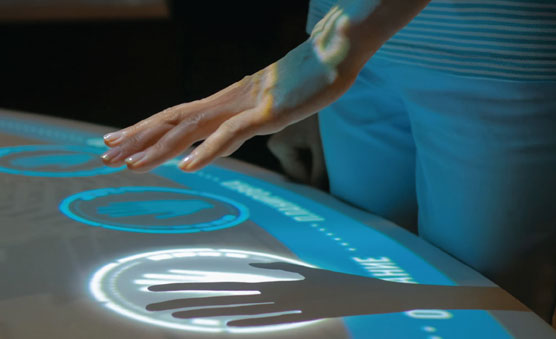
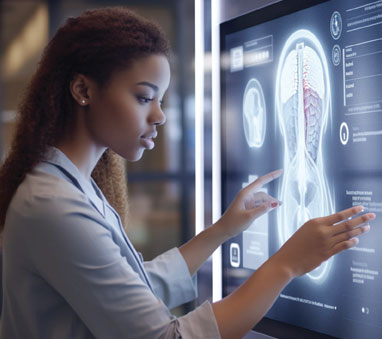

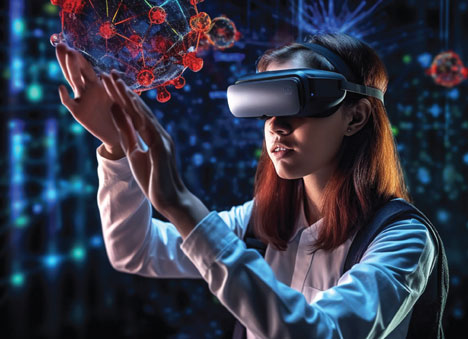


With the Museum of Medicine and Biomedical Discovery, we envision a new kind of venue — a place that doesn’t just recount the achievements of the past but uses narrative storytelling, AI and interactive displays to animate the past, capture the present and imagine the future.
The Museum of Medicine and Biomedical Discovery will not be a place to go and see; it will be a place to go and experience. It will employ interactive technology, immersive reality and digital storytelling to make the experience engaging and informative.
Our Vision
MMBD will be a place where past achievements in biomedical science and medicine can be appreciated and future achievements could be envisioned; where the excitement is palpable; where future generations will be inspired to pursue careers that improve human health and life. Our vision is to educate, inform and inspire so that every individual who visits the museum comes away feeling:
“I know. I trust. I can imagine myself.”
An Engaging and Interactive Approach
We will employ interactive technology, immersive reality and digital storytelling to make visiting the museum a wondrous and memorable experience.
Holography
Surround Sound Theater
Immersive Reality
Interactive Kiosks
Our Exhibits
The museum will invite visitors to explore medicine and biomedical science from multiple, complementary perspectives. Some examples of rotating exhibits would include:
How Medical Advances Change the World



The visitor would be virtually transported to London in 1921 to witness Frederick Banting and Charles Best discover that a substance in the pancreas – insulin – could lower elevated blood sugar in a diabetic dog and their elation when, six months later, a purified form of insulin did the same for a child with Type I diabetes. Visitors would get a sense of the extraordinary efforts made to scale up production of insulin in those early years and what was involved in producing just one ounce of this precious substance. They would hear about the quest for better, longer-acting insulins in the 1930s, ‘40s, and ‘50s and their impact on reducing the frequency of injections needed. They would see how the emergence of recombinant DNA technology in the 1980s led to the production, for the first time, of fully human insulin. Interactive kiosks would be placed around the exhibit to provide a deeper look into selected areas of potential interest such as how diabetes affects various organs, how abnormally high or low blood sugar affects the body, and the differences between Type I and Type II diabetes, just to name a few.
At the end of the exhibit, a second hologram of young Laura would appear, but now in 2023. She is strong, active and speaks with excitement about her life and plans for the future. She lifts her shirt to reveal that she is wearing a glucose monitor linked to an insulin pump that keeps her blood sugar level in the normal range.

EXHIBITION
Aha! Magical Moments of Discovery
Aha! Magical Moments of Discovery will enable visitors to hear about these experiences from the researchers themselves. Videos, holograms, and avatars will be used to provide firsthand accounts of the moment at which researchers realized that had made a profound scientific discovery or discovered a breakthrough treatment for patients with a particular disease.
This exhibit will have 3 sections: one where stories are presented to small groups as short, video vignettes; one where longer, more involved stories are presented by avatars; and a third where the most compelling stories would be presented by AI-enhanced holograms in a small theater-like setting. Interactions between a famous researcher and the audience would occur through AI-enabled, voice-recognition software so that the researcher can respond to questions from the audience. Imagine how thrilling and inspiring it would be for a visitor to have a virtual interaction with their scientific or medical hero!
Research: How Progress Is Made


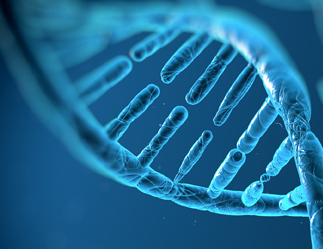
Research: How Progress Is Made will highlight the connections between the laboratory, clinic and real world. It will capture this through the use of 3 large video displays where sections will be devoted to:
• The Laboratory: “What is the disease?”, “Is there a specific molecule or process we can try to correct?” “Can we create a medicine to fix it?”
• The Clinic: “Does the medicine work in people?” “If so, how well?”
• The Real World: “How much does it help patients?”
The journey could start with depiction of the problem on the Real World screen: What is it? How many people are affected? How does it impact their lives? Then the Clinic screen could show how it was treated at that time and the difficulties and limitations of those treatments.
Laboratory discoveries that provided new insights into the disease process would appear and show how those discoveries were challenged, confirmed, and refined. It would show how these insights led to design and testing of potential medicines in the laboratory.
The Clinic screen would show how a new drug is developed from first-in-human testing allow the way through large-scale clinical trials to demonstrate its improvement over standard of care.
Finally, if the Phase 3 trial is successful, the Real World screen will show how the drug is evaluated by the FDA for safety and efficacy, and the process by which the new treatment is made available to physicians and the impact it has on patients.
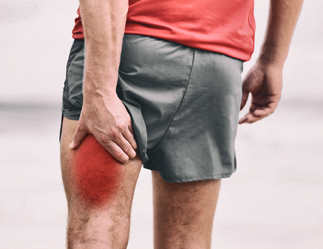
EXHIBITION
What’s Wrong? Common Conditions Explained
Kiosks will beckon visitors with words and images of some of the most common conditions and disorders, ranging from headache to obesity; from high blood pressure to a pulled muscle; from cancer to asthma. Simple questions will fade in and out: “What is it?”, “What causes it?”, “Why does it hurt?”, “How does the body deal with it?”, “What can I do about it?” and “What can I do to prevent it from happening again”?
By seeing one of their own ailments listed, visitors would be drawn to the kiosk where 3D images, animation, and voice-over address the questions listed above. Every answer would offer an option to “Tell Me More!” in case the visitor is curious and wants to learn even more about the disorder.
By presenting information in a way that is engaging, understandable, and relevant even to the most skeptical or disinterested visitors, we will be in the best position of achieving our goal: to educate, inform, and inspire every visitor to the museum.
How Do You Make That? Fix That? Do That?


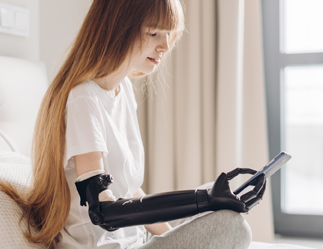
Each discipline will have its own section in this exhibit. Interactive displays will be built around a specific problem: what was the challenge that researchers or clinicians faced at the time? The they will be shown advances in technology allowed researchers to see or do things in a new level of detail or in an entirely new way, altogether. Guests will gain an understanding of how new technology gives rise to entirely new ways of approaching a problem and treating diseases.
Some of the many experiences that visitors could have in this room include:
• Experience the evolution of limb prostheses, from “artificial limbs” to robotic arms
• Understand how technology has enabled creation of entirely new classes of medicines like monoclonal antibodies, immunotherapy, and gene therapy
• See how artificial intelligence is being applied to predict 3-D protein structures, identify new drug targets, and create entirely new classes of medicines and therapies
Each example above would have a “before and after” element to show how technology not only tackled a problem but often led to radical changes in thinking that ultimately advanced a field.
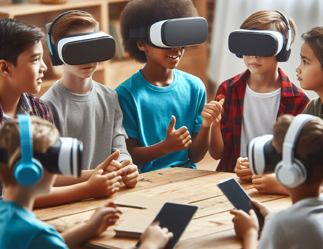
EXHIBITION
Response and Resistance: How Medicines Work and Why They Sometimes Don’t
One section of the exhibit would be dedicated to depicting how medicines get into and out of the body. Virtual and mixed/augmented reality will be used to show how each medicine finds and engages with its target; turns a process on or off, or creates conditions for the body to work more effectively.
Another section will allow guests to see the various factors that determine whether a drug will work or fail in a particular person. Using virtual reality, visitors will be given the opportunity to design a drug tailored to a specific circumstance, to see how well it works or why it fails, and then modify it until it is optimized. This activity could be done as an individual, as part of a group, or as a competition between teams.
This exhibit will be geared towards visitors who are interested in taking a deep dive and learning more about how and why drugs work and those factors that may prevent them from doing so.
The Science Behind


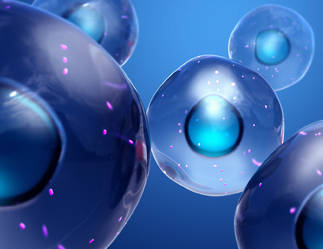
The Science Behind… will take guests on a point-of-view journey of the drug in the body. The story will be told in a small theater where visitors will be surrounded by a 180 screen, giving them the feeling that they are a part of the experience.
Imagine that the topic is how antibiotics work. Visitors will what happens when a cell attacked by a pathogen. They will watch as the cell dies and the infecting agent is released into the bloodstream to spread and infect other cells.
Visitors will then see how the immune system springs into action. They will see the different phases of the body’s response, first via the innate immune system (that limits the infection’s spread) and then by the adaptive immune system that can specifically recognize and killing the infecting agent. Guests will get a first-person perspective as they ride along with these immune cells and see how they seek out and destroy their target. Obstacles that interfere with or even prevent the immune cell from doing its job will be encountered along the way. Visitors will see how success in surmounting these obstacles could spell the difference between life and death.
The final part of the experience will show how vaccines train the body’s immune system to recognize and destroy the pathogen, thereby preventing the infection in the first place.
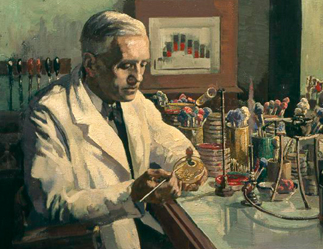
EXHIBITION
Serendipity, Medical
Misjudgment, and Ethics
Visitors will also learn about the many ways in which medical misjudgments are detected and corrected. Some may become obvious only with the emergence of new data from the laboratory or observations made in thousands of patients. The role of the Food and Drug Administration will be described and examples, such as the detection of the dangers of thalidomide to pregnant women, will be described.
Specific rules for protecting the rights of medical research subjects have evolved over the years. The displays in this part of the exhibit will recount some famous and some not-so-famous examples and provide the visitor with an opportunity to recognize what ethical principles were violated, how the situation occurred in the first place, and how it changed the way we conduct clinical research today. Simulations would be set up so that groups of visitors are presented with an ethical challenge and can discuss what they would do in a specific situation.
Why is This Important?
Why Does It Matter?


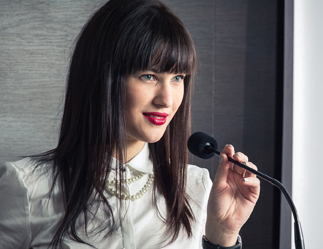
Why is This Important/Why Does It Matter? will be a forum for researchers at any level in their career – students, trainees and professionals – to present their work to a diverse audience. The challenge: to explain the problem they are trying to solve, what their research has shown, and the ultimate scientific and/or medical impact it will have.
These will be short talks, without slides, intended to provide researchers with feedback that will help them improve presentation skills and make science/medicine understandable, relatable, and exciting to the widest possible audience.
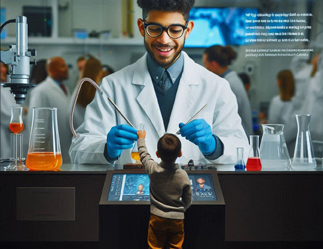
KIOSK
Why I Love What I Do
Why I Love What I Do… will be geared to those visitors, introducing them to the vast array of career possibilities that exist in medicine and biomedical science … and the diversity of people who have made it their life’s work. This will be done through a series of kiosks scattered throughout the museum: in the lobby, in hallways, in areas where people gather before entering an exhibit. The kiosks will depict individuals, drawn from a wide array of backgrounds, ages, races, ethnicities, and accents speaking from their workplace directly to the visitor, describing (and showing) exactly what they do, how it advances knowledge or helps people heal, why they were drawn to the field in the first place, and why they love what they do. We may see them during a typical day at work, during an emergency, or describing a particularly memorable patient or gratifying experience.
The purpose of this experience is to offer young visitors an opportunity to go deeper than “doctor, nurse, or scientist”, discover careers that they may never have heard of, and maybe for the first time in their lives, recognize that this opportunity is open to them.
Before You Go


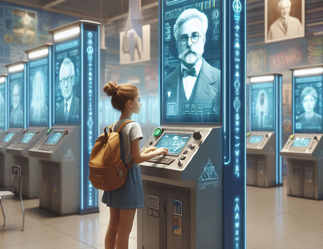
Rather than ask visitors to fill out a card or survey, AI-enabled avatars will ask visitors questions like:
o “What did you like best about your visit to the museum?”
o “Is there anything you’d like to learn more about?”
o “Are there any careers or areas that interest you?
o “Would you like to become a member and be the first to learn about new exhibits and offerings at the museum?”
o “Is there anything else you’d like us to cover in future exhibits?”
To make it as easy as possible, these kiosks will allow visitors to respond via touch-screen, voice recognition, or keyboard entry. Before You Go … will be a way of keeping visitors interested, engaged, and excited about science and medicine while, at the same time, keeping the museum fresh, relevant, and a place people will want to visit again and again.

“We live in a society absolutely dependent on science and technology and yet have cleverly arranged things so that almost no one understands science and technology. That’s a clear prescription for disaster.”
– Carl Sagan
Donate. Give. Support.
Today, the growth of new information in science and medicine is challenging health experts and overwhelming the public. Our nation’s firm commitment to promoting STEAM education in schools is vitally important and encouraging. We also need to create places where stories of science and medicine spark the imagination.
